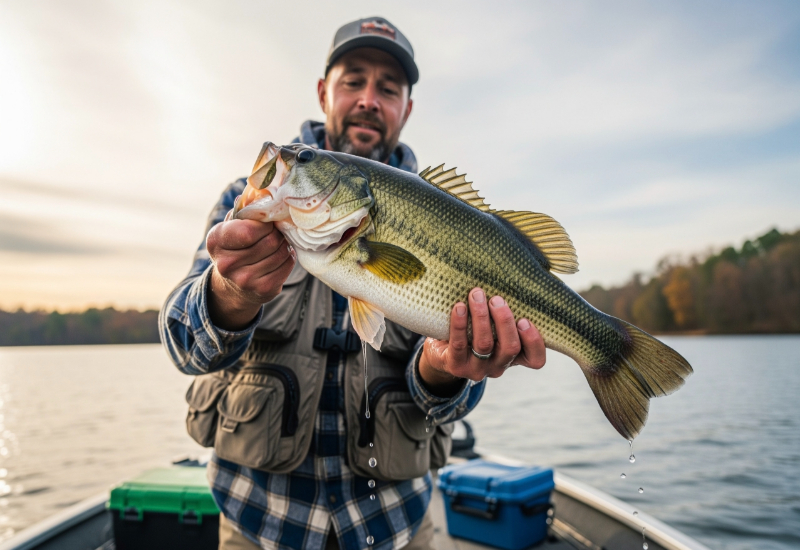
Finding bass in dropping water temperatures can be difficult once you’ve become accustomed to summer patterns. As water temperatures begin to drop in the fall, bass behavior changes dramatically. What worked during the heat of summer may no longer produce bites.
Understanding where bass move and how they feed during these cooling trends is the key to catching more fish. In this guide, we’ll cover how to locate bass in dropping water temperatures, what lures to use, and why bait selection from companies like Red Angle Fishing Products can make all the difference.
Understand Bass Behavior as Water Temps Fall
When water cools, bass transition from their summer patterns. In hot conditions, bass often linger in deeper water or shady cover to escape the heat. As the water temperature drops, oxygen levels improve, and baitfish begin to move shallower. Bass follow their food sources, making this a time of year when they’re more predictable.
The key is to track forage movement. Shad, bluegill, and crawfish all shift locations during seasonal changes, and bass stay close behind. This is why anglers who understand fall transition bass behavior consistently outfish those who don’t.
Where Bass Go When Water Temperatures Drop
Bass location depends on how quickly temperatures are changing:
- Early Cooling (70s to low 60s) – Bass push into the backs of creeks and coves where baitfish gather. Look for shad flickering near the surface.
- Mid Cooling (high 50s) – Fish stage on points, secondary ledges, and channel swings. Bass begin grouping up in larger schools this time of year.
- Late Cooling (low 50s and below) – Bass slide deeper again, holding near rocks, timber, and deep wintering holes.
For anglers, this means adjusting both location and presentation. A shallow topwater bite may still be strong early, but as the water cools into the 50s, finesse rigs and slow-moving plastics are more effective.
Fall Bass Fishing Tips For Cooling Water
Here are proven tactics to help you stay on the bite as temperatures drop:
- Follow the Shad – If you see bait flickering in the backs of creeks, you can bet bass aren’t far away. Cast reaction baits like spinnerbaits or chatterbaits to cover water quickly.
- Target Transition Points – Secondary points and channel swings are highways for bass moving from shallow to deep. Work crankbaits or jigs through these areas.
- Slow Down in the Coldest Water – As water dips into the lower 50s, bass metabolism slows. Finesse techniques like the free rig or drop shot shine here.
- Don’t Overlook Cover – Rock piles, brush, and docks absorb heat, making them prime spots when water is cooling fast.
Best Baits For Bass in Dropping Water Temps
The right lure selection is critical. In cooler water, you want baits that either mimic shad and bluegill or offer a slower, natural presentation. Some of the best baits include:
- Chatterbaits with Trailers – Pairing a chatterbait with a soft plastic trailer adds action and bulk. The Red Angle 740 Striker is a great option for this setup.
- Soft Plastic Stick Baits – A stick bait like the Red Angle Wiggle Stick is versatile. Fish it weightless around shallow cover, or rig it on a free rig to tempt bass holding deeper.
- Jigs with Soft Plastic Trailers – Crawfish become a big part of the bass diet in cooler water. Trimming down a Zeke Craw as a jig trailer gives a natural look and durable action.
- Finesse Rigs – When bass get finicky, downsizing is key. Red Angle plastics can be drop-shot, Neko-rigged, or used on a shaky head for pressured fish.
How Red Angle Fishing Products Help in Cold Water
Not all baits are created equal when water temperatures drop. Bass often become more cautious, and that means anglers need durable, natural-looking plastics with great action. Many of Red Angle Fishing’s baits deliver subtle movements that trigger strikes in colder water. The 740 Striker excels at adding vibration and life to moving baits, such as chatterbaits.
With a wide range of color options, Red Angle makes it easy to match local forage, whether you’re fishing a shad-based reservoir in the Southeast or a crawfish-heavy lake in the Midwest.
Final Thoughts on Finding Bass as Water Temperatures Drop
Learning where bass go in dropping water temperatures is all about paying attention to forage, structure, and seasonal patterns. In early fall, target shallow creeks and coves. As it gets colder, move out to secondary points, then deeper ledges and wintering holes. Adjust your lure selection to match bass activity, and you’ll stay ahead of the curve.
For anglers who want reliable, versatile baits this season, Red Angle Fishing Products offer proven options that perform when the water cools and bass get finicky.
By combining smart location strategy with the right bait choices, you’ll turn those chilly days on the water into some of the most productive bass fishing trips of the year.

Very insightful read!